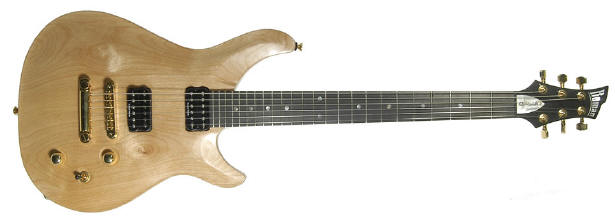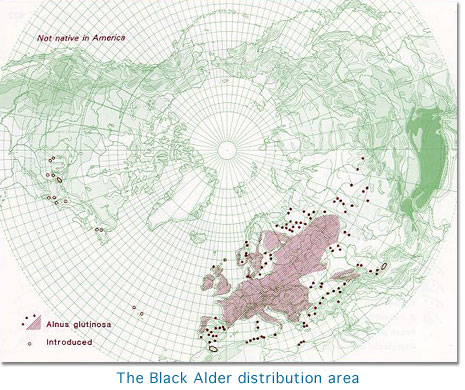Home
Custom Shop
Exotic Guitar Tonewoods Home
Alder For Guitars |
Alder
Used as body material in several American guitars like the Fender Strat Plus,
Clapton, and American Standard. Light weight (body weight about 4 lb.) with
a full sound. This is standard on
Quicksilvers &
Pearlcasters.
Moderate attack and smooth decay yielding an even balanced tone with well
defined lows and clear highs. Good choice for guitarists that require the
ability to cover a broad range of sounds with one guitar.

Alder Quicksilver

Dillion Alder Tele Style
|
Alder is what Leo Fender used on
his first bolt on guitars and so did PRS before he decided to go mass
production. Alder is a great tone wood and it costs very little. Some of the
drawbacks are it is harder to work with than say poplar or basswood.

Many
companies who used Alder have switched to Poplar or Basswood for economic
reasons. Basswood is not a favored tonewood but Poplar sounds quite good.
Poplar requires a lot of filler and I don't recommend it unless you can find it
in a good quality. (Rare)
The only company that I ever saw use Poplar effectively was
Parker on their very first models.
Poplar doesn't sound good on all
guitars and neither does Alder. They work well with bolt on type guitars that
utilize hard maple necks.
Call if you want to discuss the
properties and tonalities of these woods.
Black Alder (Alnus Glutinosa).
Alder is a fast growing deciduous
tree adapted to swampy areas and self sufficient in nitrogen uptake. Itís
distribution area is Europe, Russia and north-west of Africa. In Sweden itís
distributed up to the middle part and along the Norrland coast. There is one
more alder species, Grey alder (Alnus Incana), with itís major
distribution in northern Sweden. Grey Alder has similar wood properties as Black
Alder but is somewhat softer.

|

|
Alder wood
Alder is a light, relatively soft and medium tough wood among the wood
species. Itís relatively form stable during moisture variations. The Alders
color and structure of the wood, softness and reluctance to shrinkage and
swelling makes it suitable building guitars.
Alder wood and its appearance
The Alder has a light red color. Small clusters of minor knots is
common in the wood. Brown traces from harmless kambium insects can occur and
also brown heart, fresh knots and black rotten knots.
Alder wood and its technical properties
|
Density (at 12% moisture) 520 kg/m3 |
|
Light |
Spruce |
Aspen |
Pine |
Alder |
Birch |
Ash |
Beech |
Oak |
Heavy |
|
Hardness (at 12 % moisture) 215 Janka
|
|
Light |
Spruce |
Alder |
Pine |
Aspen |
Birch |
Ash |
Oak |
Beech |
Heavy |
|
Toughness (Bending strength 86 Mpa)
|
|
Light |
Spruce |
Aspen |
Pine |
Alder |
Oak |
Ash |
Beech |
Birch |
Heavy |
|
Alder wood and its technical data
|
Density: |
470-510 kg/m3 at 0% moisture ratio (u)
500-540 kg/m3 at 15% moisture ratio (u) |
|
Shrinkage: |
Shrinks from green wood to 0% moisture 4.3-4.7% radial and 9.3-9.7%
tangential
Shrinks from green wood to 12% moisture 4 % radial and 6.5% tangential
|
|
Compressive strength: |
39-52 MPa perpendicular to fibers at 12% moisture |
|
Tensile strength: |
92 MPa parallel to fibers at 12% moisture
2 MPa across fibers at 12% moisture |
|
Bending strength: |
78-95 MPa at 12% moisture |
|
Youngs modulus (E):
|
9000-12000 MPa across fibers at 12% moisture |
|
Shear modulus (G): |
4.5-12 MPa at 12% moisture |
|
Impact strength: |
55 kJ/m2 at 12% moisture |
|
Hardness: |
Janka: 440 on end surface and 215 across fibers at 12%
moisture
Brinell: 3.7 on end surface and 1.4 across fibers at 12% moisture
|
|
|




